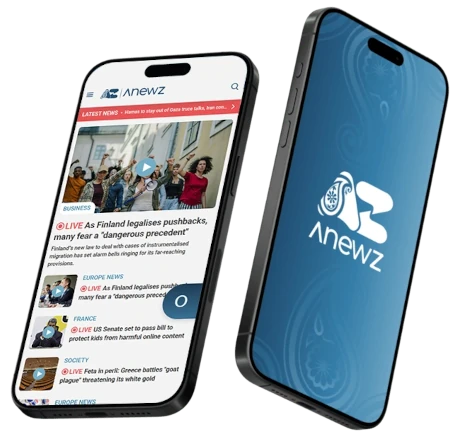Netanyahu to present Trump with military options on Iran during Florida visit
Israeli Prime Minister Benjamin Netanyahu is set to meet President Donald Trump on 29 December in Florida, where he is expected to present a package o...
USAID has long promoted itself as a supporter of press freedom, but reports suggest its media funding may have influenced domestic narratives in Europe and post-Soviet states. With the Trump administration freezing its grants, the agency’s role in shaping global information is under scrutiny.
📌 Operates in: Over 100 countries
📌 2024 Budget: $36 billion
📌 Total spent (2015–2024): $335 billion
📌 Employees worldwide: 10,000+
USAID is formally an independent U.S. agency but remains subordinate to the U.S. president, secretary of state, and National Security Council. While officially dedicated to humanitarian aid, economic development, and democracy initiatives, its role in funding media and NGOs has raised concerns about foreign influence.
🛠️ What’s Funded: BBC Media Action, the international development arm of the British broadcaster
💰 Funding in 2024: £2.6 million ($3.23 million)
⚠️ Concerns: Critics argue the funding compromises media impartiality, particularly when BBC narratives align with U.S. foreign policy interests.
🔍 What’s Funded: USAID-backed fact-checking and counter-disinformation programs
🎯 Focus: Targeting Russian narratives and misinformation
⚠️ Concerns: Lack of transparency in funding flows, sparking concerns about government-media collusion in shaping public discourse.
⚖️ What’s Funded: Opposition-friendly media and NGOs
💬 Government Stance: Hungarian PM Viktor Orbán accuses USAID of political interference
🚫 Response: Hungary banned foreign-funded NGOs, citing them as tools of external influence.
USAID’s funding freeze under Trump was welcomed by Hungarian officials, exposing Western influence behind opposition media. However, independent media that relied on USAID funding now struggle to survive.
📡 What’s Funded: 90% of Ukrainian media outlets received USAID grants
💰 Total Funding in 2024: Over $6 billion
⚠️ Concerns: With USAID funding frozen, Ukrainian media face an uncertain future, raising questions about long-term sustainability amid war and economic crisis.
📢 What’s Funded: Opposition-friendly media and NGOs
📊 Impact: USAID-backed organizations influenced protests and political movements
⚠️ Concerns: Georgian Dream government accuses USAID of interfering in domestic politics, especially during election cycles.
📌 700+ media organizations funded
📌 300+ media-focused NGOs supported
📌 6,000+ journalists worldwide received USAID grants
On February 6, the U.S. government cut off funding for major outlets including:
❌ The New York Times
❌ Politico
❌ Associated Press
🔍 Reason: Alleged misuse of public funds
✅ Supporters Say: USAID safeguarded press freedom in countries facing authoritarian control.
❌ Critics Say: USAID blurred the lines between media development and political manipulation, using journalism as a strategic tool.
With USAID’s media funding now suspended, the global information landscape is shifting. As governments and media organizations adjust to the funding freeze, one key question remains:
🧐 Was USAID defending democracy, or was it shaping the news to serve its own agenda?
Ukraine has welcomed the European Union’s decision to provide €90 billion in support over the next two years, calling it a vital lifeline even as the bloc failed to reach agreement on using frozen Russian assets to finance the aid.
Thousands of Bulgarians took to the streets on Thursday evening to protest against the outgoing government, demanding fair elections and judicial reforms to address what they describe as widespread corruption.
The United States has suspended the Diversity Visa Lottery programme, commonly known as the Green Card lottery, after a deadly shooting at Brown University.
US intelligence assessments indicate that Russian President Vladimir Putin continues to seek full control of Ukraine and to expand Russia’s influence in parts of Europe formerly under Soviet rule, contradicting repeated claims that Moscow poses no threat to the continent.
The death toll from Hong Kong’s deadliest fire in decades has risen to 161, after forensic analysis confirmed one more victim among the charred remains at Wang Fuk Court in Tai Po, more than three weeks after the blaze began, authorities said on Saturday.
Japan and five Central Asian nations have unveiled a range of initiatives aimed at strengthening critical minerals supply chains and fostering broader regional cooperation, following their first summit in Tokyo on Saturday.
The United States has proposed a potential new format for peace talks between Ukraine and Russia, which could include American and European representatives, Ukrainian President Volodymyr Zelenskyy said on Saturday, December 20.
Pakistani President Asif Ali Zardari arrived in Baghdad on Saturday evening for an official visit, the Pakistani Foreign Ministry confirmed.
Israeli Prime Minister Benjamin Netanyahu is set to meet President Donald Trump on 29 December in Florida, where he is expected to present a package of military options regarding Iran, Israel’s public broadcaster KAN reported on Saturday.
The United States and Venezuela have been jamming GPS signals in parts of the Caribbean, raising safety concerns for civilian air and maritime traffic, as tensions between the two countries escalate, according to The New York Times.
You can download the AnewZ application from Play Store and the App Store.

What is your opinion on this topic?
Leave the first comment